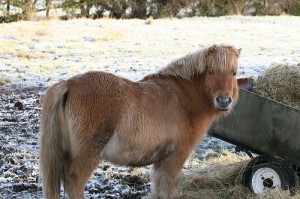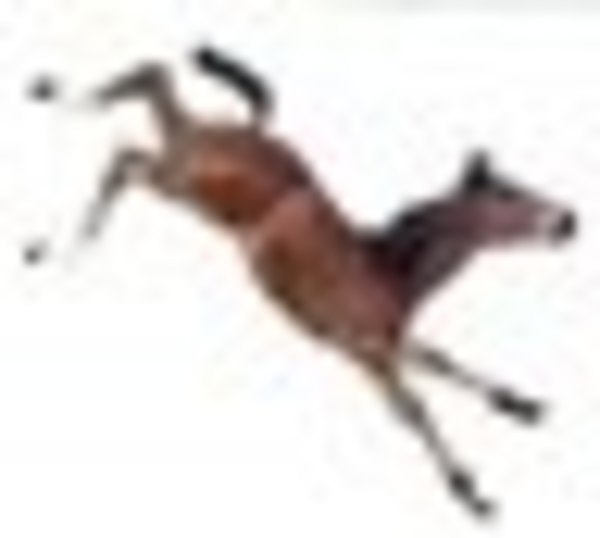Equine Obesity: The Accepted Form of Horse Abuse
- March 10, 2017
- ⎯ Fran Jurga
If I asked you to describe the most prevalent form of equine abuse in America today, you’d probably describe a tired, forlorn and thin horse pulled from a pasture with his or her mane full of burrs, hooves cracked and chipped, ribs sticking out, hip bones jutting, bony withers.
And I’ll bet you six jelly doughnuts you’re wrong and that the opposite is true.
Just watch this video:
Maybe England is the home of those round little Thelwell ponies, but don’t you think that over-padded horses are just as prevalent–if not more prevalent–in the USA? And don’t over-padded halter horses seem to score more highly in the show ring? And don’t breeders seem to believe that broodmares and stallions and sales yearlings should be fat…and that risking laminitis is just part of the breeding game?
Of course it is true that many horses are underfed and their health is at risk. But many horses who should be at the peak of health are somehow over the peak. Cresty necks, ridged hoof walls and apple-shaped butts that you can roll a tennis ball down are not healthy for a horse. Does your horse’s back turn into a bird bath after a rain shower in the paddock?
A lot of people seem to think that that is perfectly normal.

We could have a mail-in contest of FFPs (Favorite Fat Ponies). This one looks like he could eat his way out of the barn. (This is Phil Chambers’ pony “Wayne”)
I love what World Horse Welfare is doing to bring global attention to the risks of equine obesity. The Animal Health Foundation has been trying to raise awareness here in the USA, as part of its laminitis prevention campaign, and there is research on equine obesity underway at Virginia Tech and The University of Tennessee College of Veterinary Medicine, as well as obesity-related research embedded in projects related to insulin resistance and laminitis.
In Great Britain, Finnish veterinarian Laura Salonen LVM MRCVS, is currently enrolled in a three-year residency funded by The Horse Trust in equine clinical epidemiology at the Royal Veterinary College, where she is researching equine obesity and its impact on a horse’s health.
Equine obesity is a relatively new area of horse health research. And what started as an offshoot of laminitis research is turning into a valid study area. What about the fat horses that don’t get laminitis? What is their protection mechanism? What can we learn from them? But even they are not safe from encroaching arthritis and potential systemic health problems in the heart, lungs and general metabolism.
The feed companies are even cooperating by offering less-fattening grain products, and we can have our hay tested for sugar content, we can fence creatively and last by not least, we could always ride or pony these horses, get them swimming or get someone else to at least take them out for walks.
Enabling equine obesity is an unfortunate and prevalent form of unintentional, indirect and accepted equine abuse. Let’s stop it. Get them moving. Before it’s too late.
by Fran Jurga | 14 August 2010 | The Jurga Report at Equisearch.comBe friends withFran Jurga on Facebook.comDon’t miss Discover WEG with Fran Jurga for fun at the Games!Tweet









